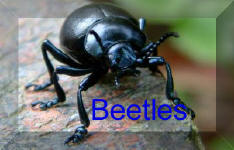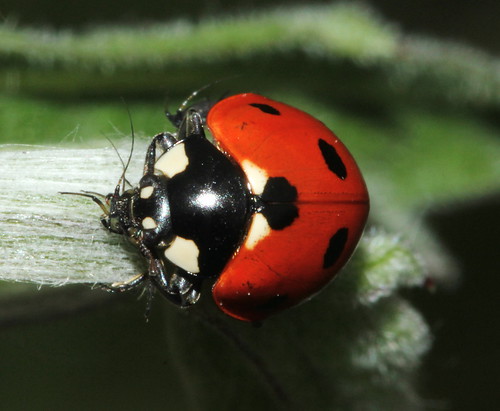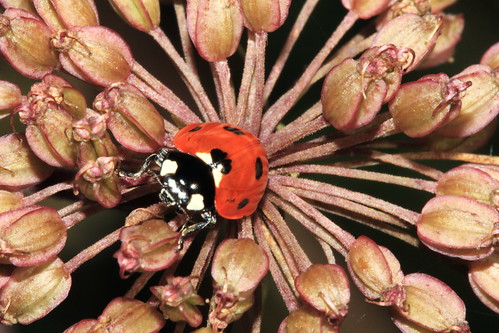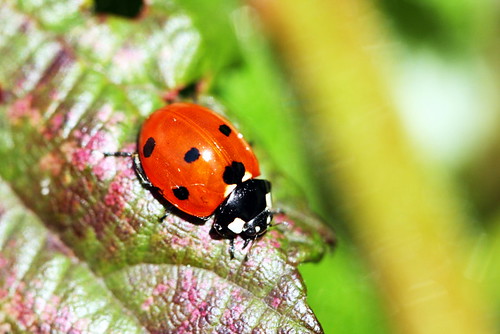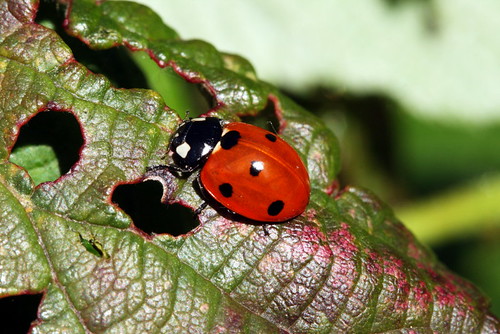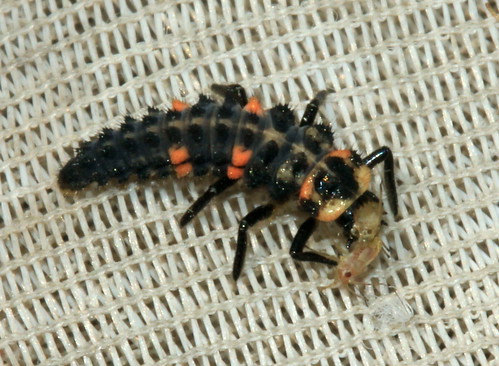Lady Bird 7- Spot Coccinella septempunctata
Back To

Home >Coleoptera >> Coccinellidae
Size 4 - 5 mm
Phenology April to October.
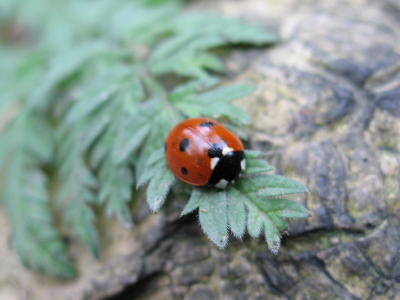
The ladybird's bright colours are a warning to predators of its foul taste. When disturbed the ladybird will secrete small amounts of its oily foul-smelling yellow blood from its legs as a further warning to predators such as ants or birds.
HabitatThey inhabit gardens, woodland, hedgerows and meadows.
Behaviour Ladybirds will hibernate in large groups in sites which are used year after year. It is thought that pheromones are released by hibernating ladybirds which attract other ladybirds to hibernate in the same place. Ladybirds can be seen piled on top of one another while hibernating, the advantage of this is perhaps that less heat is lost, increasing their chances of surviving the cold of winter.
More About
Many Ladybirds are carnivorous feeding on Aphid larva (Hemiptera, Homoptera, Aphididae)both as adults and as larvae. 4/42 British species are are vegetarians; the Orange Ladybird (Halzia 16-guttata), the 24 Spot Ladybird (Subcoccinella 24-punctata, the 22 Spot Ladybird (Phyllobora 22-punctata) and the 16 Spot Ladybird (Tytthaspis 16-punctata).
Many species are generalists, feeding on a wide variety of aphids and are easy to find i.e. the 2 Spot Ladybird (Adalia 2-punctata).
Other species are more adapted such as the Pine Ladybird (Exochomus 4-pustulatus) which is restricted to PINES by its food source, the Hieroglyphic Ladybird (Coccinella hieroglyphica) and the Heather Ladybird (Chilocorus 2-pustulatus) which are restricted to HEATHLANDS, as well as the 13 Spot Ladybird (Hippodamia 13-punctata) and the Water Ladybird (Anisosticta 19-punctata) which are restricted to damp MARSHY places, are scarcer and more difficult to find.
